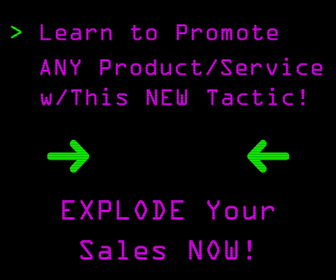Most of you should be familiar with AdSense and other Google ad platforms. AdSense fills open space while DFP lets publishers help manage advertisers, campaigns and even inventory. There is a third option, have you heard about AdSense Direct?
Here is some more information on AdSense Direct and how you can take advantage of it with your business:
AdSense Direct will fill in the AdSense inventory space with a third-party campaign that the publisher has sold, but without the setup hassle (and customization) that comes with DFP—plus the invoicing and billing is automatically handled through Google Wallet and paid out as part of a publisher’s regular AdSense payment. So while publishers still needs to sell the ad campaign themselves, it is now simple to run quick or low-cost campaigns that may have previously gone unsold. Small publishers can now easily charge and execute flat rates for those quick sales that they previously left on the table.
Now, this service is not free. Google takes a 15% cut of the campaign revenue. For that, aside from technical setup, the contract that a publisher and advertiser would normally negotiate is now handled through Google.
Here’s how the setup works. The publisher creates a campaign within the My Ads tab on their Google AdSense account. The publisher sets the price, duration, and ad size(s) then sends a link over to the advertiser for the campaign. Once the advertiser uploads their creative, destination link, and agrees to the terms, including approval of the price, the publisher just needs to confirm the ad creative and link. Because this is run through Google, they will also review the ads and destination URL—approval is estimated to take about two days.
AdSense Direct campaigns must be set up at least five days before they will run; and campaigns must also run for at least one day, but can’t stretch beyond 90 days. Once the campaign is scheduled to run, the regular AdSense ads will be replaced by the new Direct advertiser creatives.
A few things to consider. With all this convenience comes a forfeit of some control. These are flat-rate campaigns that are not CPM- (cost per 1,000 impressions) based or CPC (cost per click). Moreover, the ad spaces where the creatives will appear are predefined based on the publisher’s AdSense setup. The publisher also can’t set limits based on impression caps, location targeting, operating system, IP address or any other custom setting. This works both ways, of course.
The advertiser will pay a flat rate regardless if the campaign serves 10,000 impressions or 100,000. So it’s important for both the publisher and advertiser to negotiate expectations beforehand. Also, if the advertiser wants custom targeting to specific pages, specific times or demographics, they’re better off setting up a traditional campaign using a more power management tool—like DFP.
When all is said and done, though, the slice of this new product that might get publishers to give it a shot is the automatic AdSense billing and payment—eliminating the countless phone calls and e-mails for overdue and unpaid invoices might be worth 15%.
Regardless of your campaign impressions, you will pay the flat rate so it is always good to negotiate the details beforehand. The 15% is actually pretty fair due to it taking care of emails, calls and invoicing of new deals on top of your current business.
Can you see how this would be beneficial for your business?
Image Source: Pedro Laboy on Flickr
CHALLENGE Yourself to Profit!
Free Download: Build Your Profit-Generating Online Business With This Free Blueprint
Sign Up, follow the easy steps and You'll get the tactics, strategies & techniques needed to create your online profit stream. It's free!



